Every project should be a quality project.
Every team should be a quality team.
And every day should demonstrate commitment to excellence in quality management.
Lean Six Sigma tells us that quality is a key predictor of customer satisfaction and that managing the quality of our product reduces rework and delivers a better result for owners and contractors alike.
Let’s dig deeper into how we can make a quality improvement in construction projects.
Designing a Quality Management Process
Each trade partner has a role to play in the final project delivery. Therefore, they must each have a way of measuring and managing the output of their teams for quality standards. Contracting companies should follow two key steps when developing a quality management system.
- Prepare for quality assurance through examination and definition
- Implement a process for evaluating the successful implementation of the established quality targets
Prepare for Quality Assurance
Quality touches many aspects of construction processes, including:
There are always some things that are beyond the contractor’s control, such as a product defect. However, it is possible to create higher-quality deliverables with planning.
When designing a quality assurance program, it should be linked to the company’s long-term strategy and focus on the most critical elements that impact the deliverable the customer receives. When preparing for quality assurance, companies should include the following:
- Identifying root causes for current quality issues
- Defining the quality standards
- Delivering training
1. Identifying Root Causes for Current Quality Issues
Before implementing any new program, assessing your current state of work is crucial. Not only do you have to consider what is an acceptable outcome, but you have to think about how it can effectively alter your work.
If specific errors are recurrent in your work, digging into the root cause will provide insight into how to prevent them through process, product, and training changes.
2. Defining Quality Standards
Once the issues have been identified and a cause for current quality errors is determined, it is time to define acceptable quality standards for the contractor.
Quality standards could include:
- Having targets around how often rework is required
- If the product was built or installed to the manufacturer’s specification
- How well the product stands up over time
A company could approach this definition as a collaborative action with the field and office working together to determine what can be completed in a project environment. Including your field experts in this definition will also lay the groundwork for quicker adoption of the program when it rolls out to the company because they had a voice in defining what would be expected.
3. Delivering Training
Now that a contractor has identified the recurrent errors and has defined the quality measurements going forward, it is essential to train employees who the quality management process will impact. Again, based on what was uncovered in the root cause analysis, this may include various training programs.
At a minimum, it should include the following:
- A rollout of the program and how it will be implemented
- Any new or revised training on how to achieve quality targets through skill development or upskilling of employee
Program Rollout Training
Training must be a key component before the start date when a company institutes any new program, from quality to vacation to benefits. Ensuring that all employees, both in the field and office, are comfortable with their roles and how the new program impacts them is critical to keeping employees engaged and ready to assist the company in achieving its goals.
Identify all the different job roles affected and the level of training or awareness they might need to support the program. Sometimes the training may be an email or notification that a new program is happening. Other times, it should be a more in-depth overview of how the program will impact a specific set of processes for doing work.
Skills Training
If you ask your employees to deliver a better product to your customer, you must enable them to build the skills necessary.
Developing and delivering skills training to ensure a high-quality workforce starts with assessing their current and needed skill levels and identifying how to close the gap between the two levels. Some examples include:
- A refresher session on a job site with a product representative
- Classes held during or after work to learn a new skill
- A just-in-time video to allow them to refresh a skill that is not done consistently before beginning
However you address the skills training ensures that safety is addressed as well.
Implement a quality management process
All the pieces you have created must then be rolled into a process allowing the company to manage and measure the effective change in quality output.
The implementation should include a process that is:
- Monitoring the impact on the company through defined metrics such as reduced rework cost, higher customer satisfaction
- Increasing productivity through quality adherence on the first attempt
- Including a way to assess the quality in the field during construction
- Evaluate the impact through the lifecycle of the building
Quality Improvement in Construction Projects: Deliver with Intention
“Quality is never an accident. It is always the result of intelligent effort. – John Ruskin.
As with most things that make a difference to a company’s bottom line, your intention drives change. Therefore, creating a simple and easily replicated program throughout different offices and geographies or with other departments is critical.
Do you need help understanding how to design for replicability and leverage our simple process for designing training programs that define good and evaluate performance? Contact us today to get access to your free design tools and discuss how we can further your quality improvement in construction projects and workforce.

